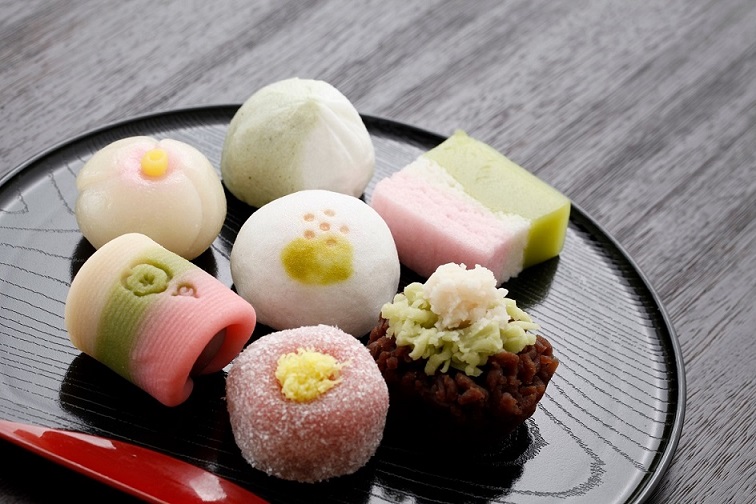In the heart of Japan’s culinary landscape, where sushi and ramen claim their fame, there exists a hidden world of artistry and delicacy – Wagashi. These traditional Japanese sweets transcend the ordinary, both in taste and visual appeal, making them a captivating facet of Japanese culture that often escapes the spotlight.

The Artistry Behind Wagashi
Wagashi, meaning “Japanese sweets,” is a craft that intertwines culinary expertise with a deep appreciation for aesthetics. These confections, often served with tea, are not merely treats for the taste buds but are miniature masterpieces that reflect the changing seasons, cultural celebrations, and the delicate nuances of Japanese life.
Each Wagashi tells a story, and behind every creation lies a meticulous process that goes beyond basic dessert-making. From the vibrant hues to the intricate designs, Wagashi is a testament to the Japanese commitment to precision and beauty. Artisans employ various techniques such as Nerikiri (a mixture of sweet white bean paste and glutinous rice), Mochi (rice cake), and Anmitsu (a sweet jelly dessert), each with its distinct texture and flavour.
Seasonal Symphony
One of the defining features of Wagashi is its deep connection to the seasons. These sweets are crafted to mirror the changing landscapes and natural phenomena throughout the year. Cherry blossoms bloom in delicate pink sweets during spring, while autumn sees the transformation of Wagashi into vibrant hues mirroring the falling leaves. This seasonal adaptation not only reflects the richness of Japan’s nature but also highlights the importance of harmony with the changing environment.
Tea Ceremony Elegance
Wagashi is not a standalone indulgence; it is an integral part of the Japanese tea ceremony. The delicate balance of flavours in these sweets is designed to complement the bitterness of matcha, creating a harmonious and complete sensory experience. The shapes and colours of Wagashi are often chosen to evoke specific themes, enhancing the overall ambiance of the tea ceremony.
The Master Craftsmen
Behind the scenes, Wagashi-making is an art passed down through generations. Master craftsmen, often working in family-owned establishments, dedicate their lives to perfecting the art of shaping, moulding, and infusing these sweets with cultural significance. It’s not just about following a recipe; it’s about preserving a heritage and infusing each creation with the essence of tradition.
Wagashi Today: Blending Tradition with Modernity
While Wagashi is deeply rooted in tradition, contemporary artisans are finding innovative ways to infuse this ancient art form with modern influences. From avant-garde designs to incorporating unconventional ingredients, Wagashi is evolving while staying true to its cultural roots. This evolution ensures that the art of Wagashi remains relevant and appreciated by new generations.
Savouring Wagashi: A Cultural Experience
For travellers in Japan, indulging in Wagashi is not just a culinary adventure; it’s a cultural immersion. Visiting traditional sweet shops provides a glimpse into the craftsmanship behind these delectable creations. Many shops even offer workshops where enthusiasts can try their hand at Wagashi-making, fostering a deeper appreciation for this edible art.
In the world of Wagashi, every bite is a brushstroke on the canvas of Japanese culture. It’s a celebration of seasons, a testament to craftsmanship, and a journey into the heart of a nation that finds beauty in the details. So, the next time you find yourself in Japan, don’t just taste the sushi – savour the symphony of Wagashi, where tradition and taste converge in an exquisite dance of flavours.










